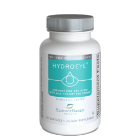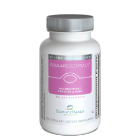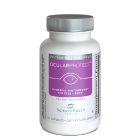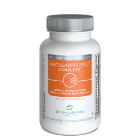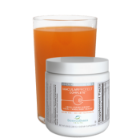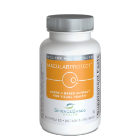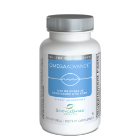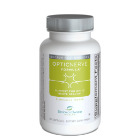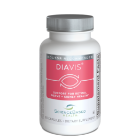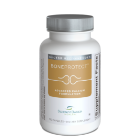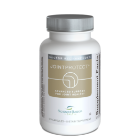FREE SHIPPING with Auto-Delivery & SAVINGS UP TO 20% with a Package Plan >>
FREE SHIPPING & SAVINGS UP TO 20% >>
GLA & EPA / DHA Combination Advantageous in Dry Eye
GLA and EPA Have Complementary Actions
The fatty acids gamma-linolenic acid (GLA), eicosapentaenoic acid (EPA) and docosahexaenoic acid (DHA) affect cellular processes involved in inflammation, including the production of eicosanoids. Prostaglandins are the major eicosanoids that are produced from specific fatty acids during inflammation:
- Anti-inflammatory prostaglandin E1 is derived from dGLA, a metabolite of GLA from the omega-6 family of fatty acids;
- Anti-inflammatory prostaglandin E3 is a derivative of EPA, an omega-3 fatty acid.
- Finally, the omega-6 arachidonic acid – abundant in meat and animal products – gives rise to pro-inflammatory prostaglandin E2.
It’s well known that inflammation plays a role in ocular surface dryness. Most dietary supplements investigated in dry eye have tested GLA or EPA and DHA. However, combining these fatty acids may optimize their ability to modulate inflammation.
Human studies, for example, have demonstrated that the addition of EPA and DHA in a balanced ratio to GLA prevents elevations in serum arachidonic acid , thus leading to decreased levels of pro-inflammatory prostaglandin. A combination of omega-3 and omega-6 fatty acids also results in lower arachidonic acid in the retinas and exorbital lacrimal glands in animals . A recently published study lends credence to the idea that a GLA, EPA and DHA combination may provide advantages to supplementation with fatty acids from either the omega-3 or omega-6 family alone.
Study Design and Methods
Female Lewis rats were fed diets containing 1) GLA; 2) EPA and DHA; or 3) a combination of GLA, EPA and DHA for 2 months before the induction of dry eye using a continuous delivery of scopolamine, and during scopolamine treatment. Two, 10 and 28 days after dry eye-induction, clinical signs of corneal dryness were evaluated in vivo using fluorescein staining. Major histocompatibility complex Class II (MHC-II) expression and mucin (rMuc5AC) production in the conjunctival epithelium were evaluated by immuno-staining. Lipids and prostaglandins were analyzed from the exorbital lacrimal gland.
Results
Dietary supplementation of omega-6 (GLA) and/or omega-3 fatty acids (EPA and DHA) improved the clinical signs of dry eye, although at a moderate level. All three of the fatty acid enriched diets minimized the occurrence of corneal keratitis after 28 days of treatments, and all the diets partially prevented a decrease in mucin.
The combined omega-6 and omega-3 diet, however, led to a lower arachidonic acid content in phospholipids (where fatty acids are stored), and a higher dGLA content when compared to the GLA-only enriched diet. Further, the over-expression of MHC II in the conjunctival epithelium caused by dry eye induction was significantly reduced only with the GLA + EPA + DHA diet after 28 days of treatment.
Comments
According to the study authors, these results point out the efficacy of combining omega-3 with omega-6 GLA. GLA, dGLA, EPA and DHA have all been described as decreasing inflammation by reducing the expression of MHC II and inhibiting the production of inflammatory cytokines such as TNF-α and IL-1β. In this study, only the combined fatty acids reduced MHC II expression.
These findings are in agreement with those from a pilot clinical trial conducted by the same researchers . In this trial, 3-month treatment with combined GLA, EPA and DHA demonstrated improved symptoms, and suggested a beneficial effect on the clinical signs of ocular dryness. The authors state that GLA with EPA and DHA may be useful in a dry eye therapy strategy along with classical therapy such as artificial tears.
- Barham JB, et al. Addition of eicosapentaenoic acid to gamma-linolenic acid-supplemented diets prevents serum arachidonic acid accumulation in humans. J Nutr 130:1925-31, 2000.
- Laidlaw M, et al. Effects of supplementation with fish oil-derived n-3 fatty acids and gamma-linolenic acid on circulating plasma lipid profiles in women. Am J Clin Nutr 77:37-42, 2003.
- Schnebelen C, et al. Nutrition for the eye: Different susceptibility of the retina and lacrimal gland to dietary omega-6 and omega-3 polyunsaturated fatty acid incorporation. Ophthalmic Res 41:216-24, 2009.
- Viau S, et al. Efficacy of a 2-month dietary supplementation with polyunsaturated fatty acids in dry eye induced by scopolamine in a rat model. Graefes Arch Clin Exp Ophthalmol 247:1039–50, 2009.
- Creuzot C, et al. Improvement of dry eye symptoms with polyunsaturated fatty acids. J Fr Ophtalmol 29:868–73, 2006.

